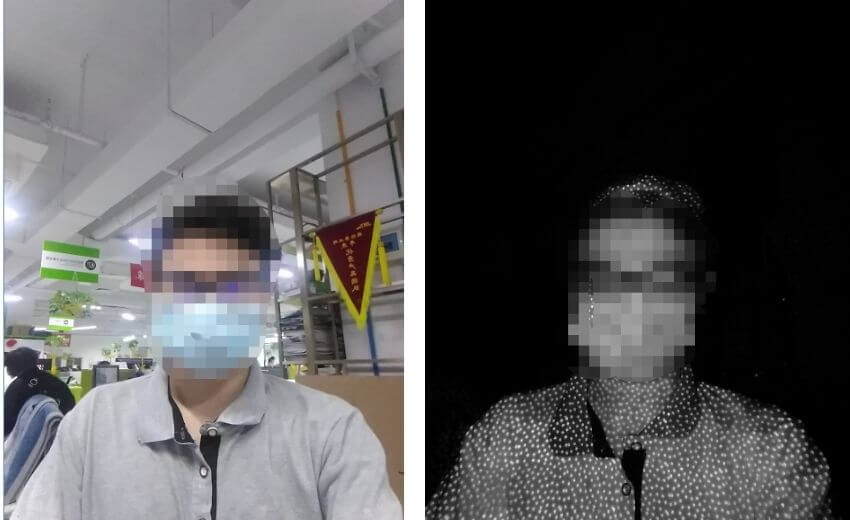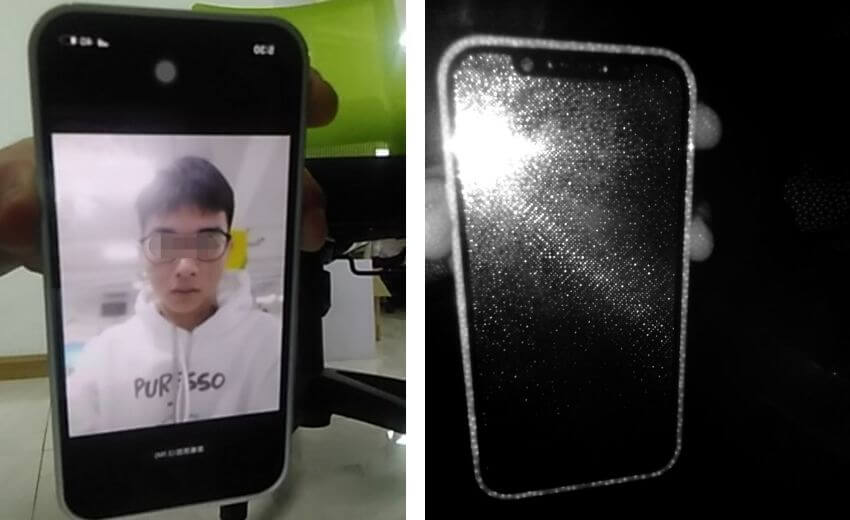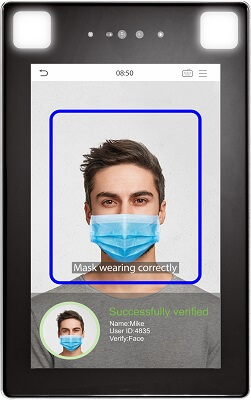Spoofing continues to remain a major concern for facial recognition customers. But ZKTeco's latest offering ProFace X(SL) looks to overcome this with 3D structured light.
Facial recognition has become a preferred access control modality after
COVID-19 forced the world to choose touchless systems. Over the last year, companies that provide facial recognition solutions have worked relentlessly to adapt to the new conditions.
However, one concern has persisted. Despite several technological advancements, people with malicious intent could still use images of faces to spoof the system into granting access. Simple as it seems, the issue has kept facial recognition engineers on their toes for quite some time and hurt market demand.
But all this could change now as
ZKTeco has come up with a solution that can prevent spoofing. The company's latest offering, ProFace X(SL) that uses 3D structured light facial recognition technology, can instantly distinguish between a real face and an image.
How does 3D structured light work against spoofing?
3D structured light facial recognition enables a high-speed camera to determine the depth and surface information of an object placed in front of it. In simple terms, the system projects light onto the object's surface to identify the distortions in its surface. Such distortions will not be present in a flat image that a spoofer uses.
"The 3D structured light technology of ProFace X(SL) uses a special Class 1 laser beam, that's harmless to humans, to generate tiny light spots on the object," explains Paul Yang, Project Solutions Manager at ZKTeco. "These spots are invisible to the naked eye. The reflected light beams are then read by a special camera with a processor that draws up a 3D model corresponding to the distortions detected on the surface."
 The ProFace X(SL) camera picks up reflected light beams
The ProFace X(SL) camera picks up reflected light beams
to create a 3D model of the object.
This helps the system identify photos and video images as flat pictures and a real face as a 3D object. Once this is done, the system runs several secondary tests to verify its finding further. These include the movement and reflection of eyeballs, characteristics of the skin, and micro-expressions.
 3D structured light technology identifying a flat image on the phone screen.
3D structured light technology identifying a flat image on the phone screen.
What makes ProFace X(SL) unique in the market?
 ZKTeco ProFace X(SL)
ZKTeco ProFace X(SL)
Besides structured light, two other 3D imaging technologies are available on the market – TOF and RGB binocular imaging. To understand ProFace X(SL)'s advantages over competitors, a closer look at these technologies is necessary.
Time of Flight (ToF): ToF uses a special camera to capture the image reflected by the laser on the object. The closer the distance, the faster the return of light. The depth, calculated by the time it takes for the light to reflect, is used to create a 3D image. Due to the relatively high technical requirements of the camera, it is used more for industrial applications.
Binocular Stereo Vision: Binocular imaging works similar to human eyes that work with the brain to help us perceive 3D forms. This technology requires massive processing power and complex algorithms, and because of this, most facial recognition devices in the market avoid using it.
Structured light that ProFace X(SL) uses is both agile and accurate, so much so that one of the earliest uses of this technology was for face recognition on iPhones.
"Now it is widely used in the payment industry by major applications like Alipay and WeChat," Yang explained. "We consider 3D structured light technology as the most cost-effective 3D imaging technology for face anti-spoofing industry."
Who would benefit the most from this solution?
As the first facial recognition product in the security industry with 3D imaging technology, ProFace X(SL) would be ideal for high-security places, such as banks, police stations, warehouses, etc. Customers can wall-mount it and install on access gates, indoor and outdoor.
"ProFace X(SL)'s high recognition rate of up to 10 faces at a time and highly adaptable features make it a good choice for new customers upgrading to a non-contact recognition system," Yang pointed out. "3D structure light technology is being widely used to secure several payment systems. Since ProFace X(SL) has the same level of anti-spoofing capability, it can also be customized for local payment projects."
Another major application for 3D imaging technology is smart locks. Smart lock spoofing is a concern, especially among smart home customers. As this technology matures and power consumption is optimized, we may see it revolutionizing the smart locks industry.
"We also see this technology being used to increase human-computer interaction in motion-sensing games, online fitness classes, virtual shopping, and online fitting rooms," Yang continued. "As smart home solutions continue to develop and improve 3D structured light would open a world of new opportunities.”
How can you get the most out of ProFace X(SL)?
ProFace X(SL) is IP68 waterproof and dustproof. It works in temperatures ranging from -30 to 60°C. However, integrators must be aware that the 3D anti-spoofing technology does not work well in direct sunlight. Hence, for outdoor applications, Yang suggests using a shade or a cover over the device.
"The main component of 3D structured light is its laser transmitter, which uses a Class 1 laser with a wavelength of 940nm," Yang continued. "Most indoor light sources, even if they are direct, will not impact it. The only exception I can point out is the 940nm infrared fill light seen in a very small number of surveillance cameras."
The power of the sun is more than 1000W/m
2. Direct sunlight blinds the camera reading the laser pattern and preventing the capture of the image. In Yang's own words, it's like looking for candlelight in front of the sun!
Another factor that integrators and customers must know is that the technology is also limited by the wavelength and power of its laser class. Class 1 laser cannot travel far. Installing the device at a distance of 0.5-1.2m from where people would try to access it would be ideal.
Evolving to a promising future
A face recognition system that can see through spoofers would be a huge relief to customers. The ProFace X(SL) would be a great addition to the market because the pandemic-induced concerns may not go away, and customers would continue to look for high-quality touchless access control systems.
Of course, there is always room for any technology to grow and improve. 3D structured light is not any different. For instance, ZKTeco is currently working to make products that can perform under direct sunlight. In the
coming years, we will surely see more such developments.
More product details:
https://www.zkteco.com/en/product_detail/ProFaceX-SL.html
ZKTeco Official Website:
www.zkteco.com